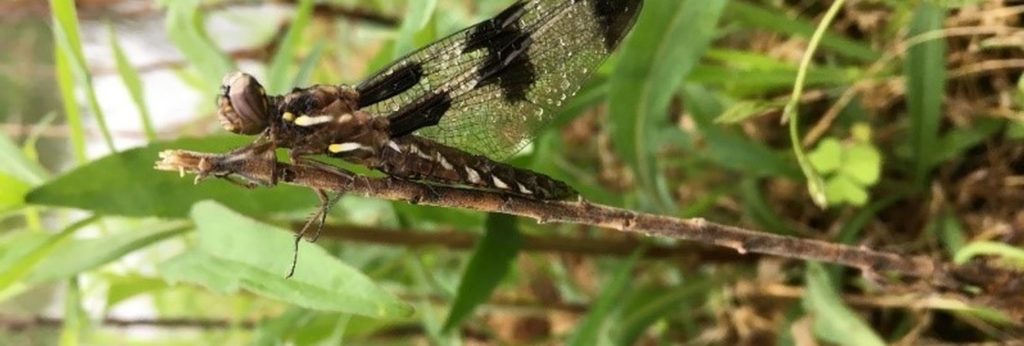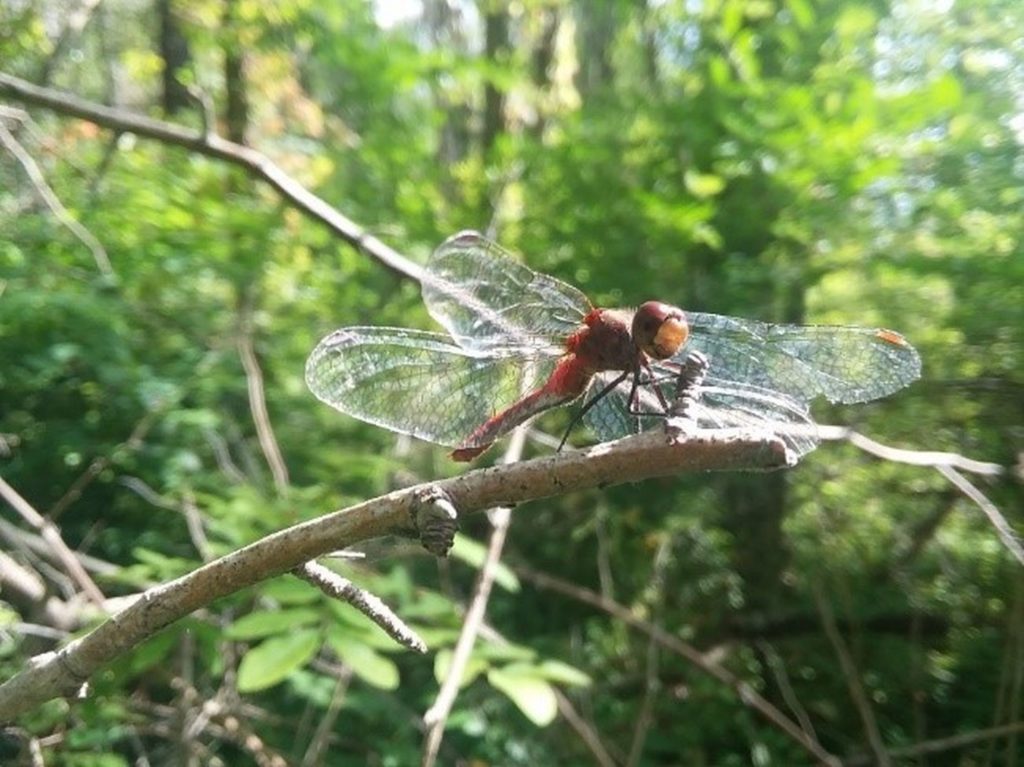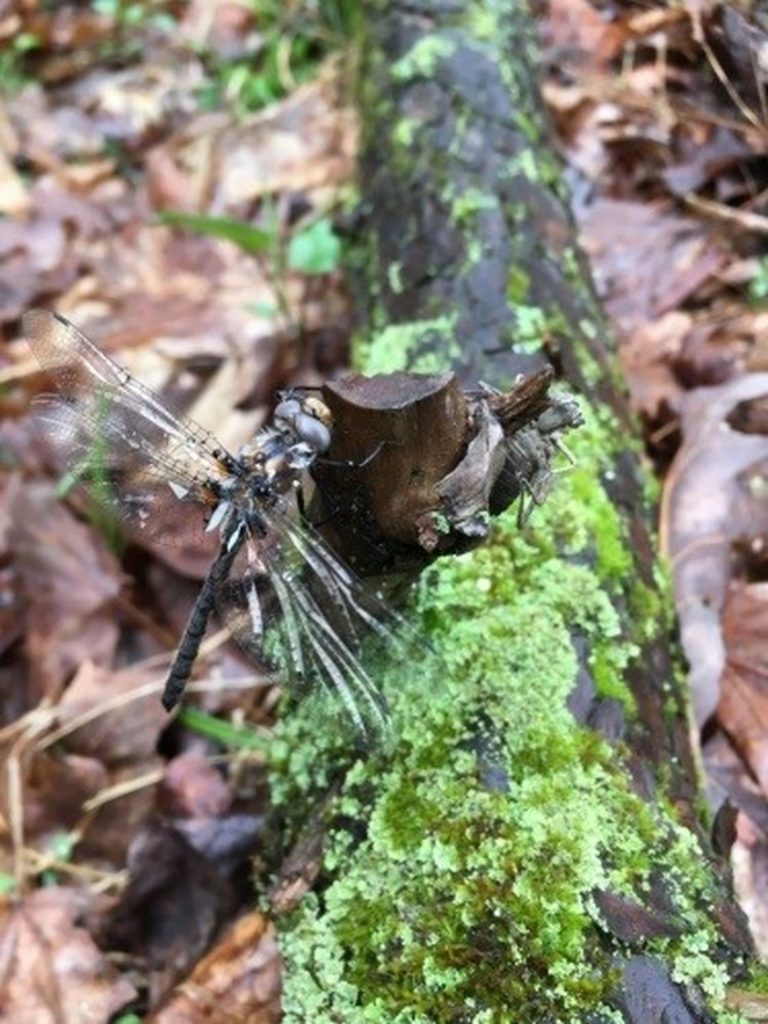
A kayak, a pair of binoculars, and a notebook. This may sound like the packing list for a birding trip along the Buffalo River, but a new group of animals is gaining attention amongst wildlife enthusiasts. Take a look through your binoculars while you are out on the water and you will see not only birds, but another group of colorful creatures flying around- dragonflies!
Dragonflies and damselflies, well known for their erratic flight and variety of colors, can be found along the Buffalo Blueway. Ancient dragonflies lived in the Carboniferous period, almost 300 million years ago. They once grew as big as a bird! Dragonflies and damselflies are in the order “odonata,” meaning “tooth”. The name “odonates” refers to the strong, toothed jaws of these highly adapted predators. They are much smaller today, and despite their name, they are not known to bite humans.
“Dragonflying” has become the new birding. You can join in on the fun while you paddle along the Buffalo Blueway! Restoration efforts have resulted in cleaner water and healthier shoreline habitats. Slowly, wildlife is returning, including insects like dragonflies and damselflies. The best way to go dragonflying on the Buffalo Blueway is using a pair of binoculars and watching from your kayak or other paddle craft! Using the online mapping tool, plan your trip on the Buffalo River, hop in your kayak and watch as these insects and other animals return to the river that was once declared “dead”.

Over 190 species of dragonflies and damselflies have been observed in New York State, making it one of the most diverse states in the U.S. for odonates (The New York Dragonfly and Damselfly survey 2005 – 2009). As with birds, once you begin to look closely at these creatures, you’ll discover that each species is unique in its color, behavior, and personality! Watch fascinating behavior as a female lays eggs by tapping her abdomen to the water, or catch a glimpse of a battle between males competing for territory. Travel to new habitats and you’ll be sure to find some new species for your life list. Different seasons will also bring new species to observe- look for huge groups of wandering gliders in the summer, and bright rusty red meadowhawks in the early fall.


Without clean water, dragonflies and damselflies would not exist because they spend much of their life as aquatic nymphs. Referred to as macroinvertebrates, they spend this stage near the bottom of the riverbed. Because some are sensitive to pollution, a high diversity of macroinvertebrates indicates good water quality.

Dragonflies and damselflies can spend anywhere from a few weeks to a few years in the water as aquatic nymphs! A newly emerged dragonfly teneral dries its wings on the left, leaving behind its exuvia on the right.
Recently emerged dragonflies are called tenerals. They must dry their wings before they can fly. In this picture you can see the exuvia, or hard outer shell, of the dragonfly nymph! Check along the Buffalo Blueway on grass stems and other vegetation to find these signs of dragonflies that are left behind.
Adult dragonflies have exceptional adaptations that allow them to maintain their place as one of the top insect predators along the Buffalo Blueway. Dragonflies are able to move each of their four wings independently, making them excellent fliers. Often, you can observe a dragonfly turning at a moment’s notice to catch mosquitos and flies, some of their favorite prey.
The Buffalo Blueway provides access to the Buffalo River, right amongst these fascinating animals! Check out the Buffalo Blueway trip planning tool.
The natural world always provides a new and exciting discovery, if you want to learn more about odonates, take a look at the resources listed below:
Resources:
The New York Dragonfly and Damselfly Survey 2005 – 2009 : Distribution and Status of the Odonates of New York, Erin L. White, Jeffrey D. Corser, Matthew D. Schlesinge
Dragonflies Through Binoculars: A Field Guide to Dragonflies of North America, Sidney W. Dunkill
Dragonflies of the North Woods, Kurt Mead
A Field Guide to the Dragonflies and Damselflies of Massachusetts, Blair Nikula, Jennifer L. Ryan, Matthew R. Blume
Wild Guide: Dragonflies, Cynthia Berger



